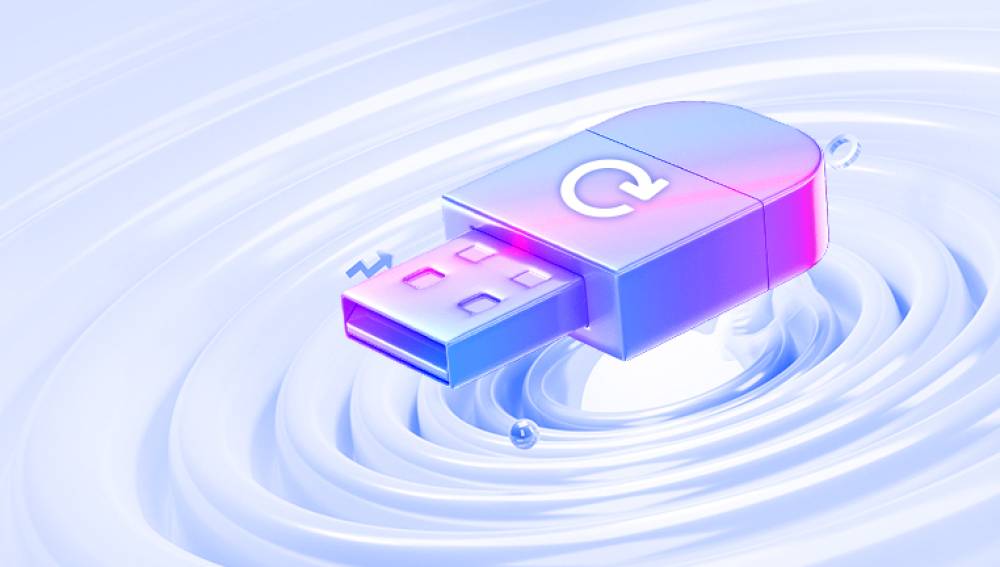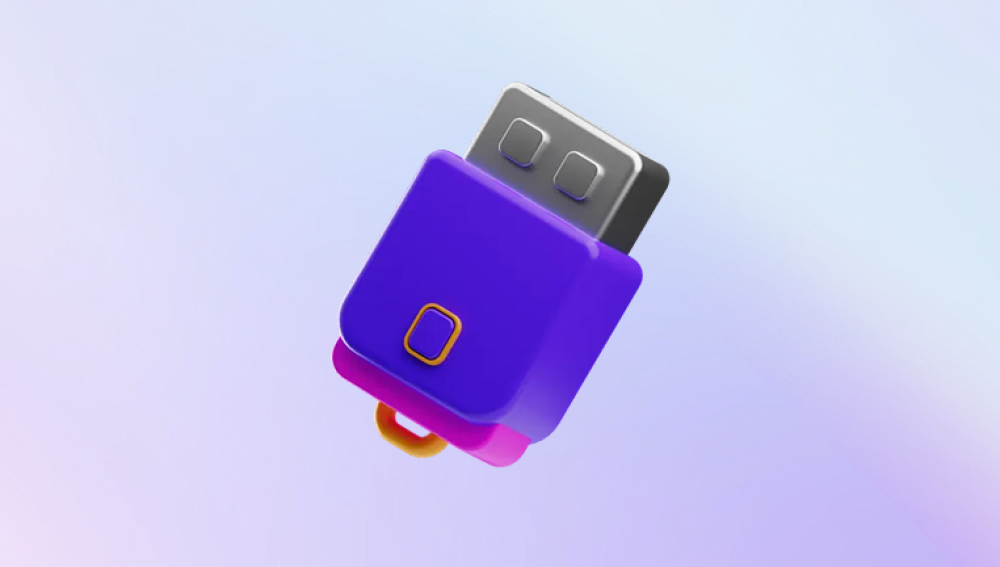Flash drives, also known as USB drives or thumb drives, are compact, portable, and widely used to store and transfer data. They offer unmatched convenience for everything from saving work documents and school assignments to transferring photos, videos, and software between devices. However, despite their popularity and portability, flash drives are not immune to problems. Files stored on them can be lost in the blink of an eye deleted accidentally, corrupted by malware, or wiped clean after an unexpected format.
Chapter 1: Data Loss on Flash Drives
To recover data successfully, it’s important to first understand how and why files can go missing. Flash drives use solid-state memory to store data. When a file is deleted or lost, the actual data usually remains on the drive until it's overwritten by new files.

Common Causes of Flash Drive Data Loss
Accidental Deletion
Files deleted from a flash drive typically bypass the Recycle Bin, making recovery more urgent.
Formatting the Drive
Formatting erases all file entries, but often doesn’t destroy the data itself—giving recovery tools a chance to retrieve it.
File System Corruption
Improper ejection, sudden power loss, or malware can corrupt the drive's file system, causing the data to become unreadable.
Virus or Malware Attacks
Malicious software may delete or hide files, infect files, or make the entire drive unreadable.
Logical Errors
Issues such as partition loss or errors in the drive's file allocation table (FAT) can hide or misplace data.
Physical Damage
While flash drives are rugged, they can still be damaged by heat, water, bending, or wear, leading to inaccessible files.
Chapter 2: Is Data Recovery Possible?
The recoverability of your data depends on several key factors:
How quickly you respond: If the drive is used after data loss, overwritten sectors reduce your chances.
Type of damage: Logical errors are usually recoverable with software. Physical damage may require professional help.
Type of file system: FAT32. exFAT, and NTFS are commonly used. The recovery tool must support the file system in use.
Most importantly, stop using the flash drive immediately once you notice files are missing. The longer you use it, the higher the risk of overwriting recoverable data.
Chapter 3: Tools for Data Recovery on Flash Drives
Drecov Data Recovery
Drecov Data Recovery is a powerful and user-friendly tool designed to help you recover lost, deleted, or inaccessible files from flash drives with speed and precision. Whether your data disappeared due to accidental deletion, formatting, corruption, or virus attacks, Panda provides a reliable solution for retrieving important files such as documents, photos, videos, and more.
The strength of Drecov Data Recovery lies in its intuitive interface and advanced scanning capabilities. With just a few clicks, users can initiate a scan of their flash drive and recover lost data without requiring any technical expertise. The software supports both quick scans for recently deleted files and deep scans for more serious data loss situations, such as RAW file systems or formatted drives.
One of Panda’s key features is its read-only scanning process, which ensures that no further data loss occurs during recovery. This safety-first approach preserves the integrity of your flash drive and maximizes your chances of a successful recovery. Additionally, users can preview files before recovery, making it easy to identify and restore exactly what they need.
Chapter 4: Step-by-Step Guide to Recovering Data
Follow these steps to recover lost files from your flash drive:
Step 1: Stop Using the Drive
Remove the flash drive and do not save or modify any files until recovery is attempted.
Step 2: Choose and Install Recovery Software
Install a reliable recovery tool on your computer but not on the flash drive itself.
Step 3: Plug In the Flash Drive
Connect the USB drive to your computer and launch the recovery program.
Step 4: Scan the Drive
Choose the flash drive from the list of available devices. Begin with a quick scan. If results are insufficient, run a deep scan.
Step 5: Preview Found Files
Browse through the files identified during the scan. Use filters to sort by file type, date, or name. Preview documents, photos, and videos to confirm their integrity.
Step 6: Select and Recover
Choose the files you want to restore and select a recovery location. Important: Do not save recovered files back to the same flash drive use your computer or another storage device.
Step 7: Confirm File Integrity
Open the recovered files to ensure they’re functional and undamaged.
Chapter 5: Troubleshooting Common Recovery Issues
Even with the best tools, problems can arise. Here's how to solve them:
Issue: Flash Drive Not Detected
Try different USB ports, computers, or check the system's Disk Management or Disk Utility to see if the drive appears unallocated.
Issue: Files Recovered Are Corrupted
This may occur if the files were partially overwritten or the file headers were damaged. Try another recovery tool or use file repair software.
Issue: Drive Appears as RAW
This means the file system is corrupted. Most recovery programs can handle RAW drives, especially in deep scan mode.
Issue: No Files Found
Ensure you performed a deep scan. If that fails, the data may have been overwritten or the drive physically damaged.
Chapter 6: When to Seek Professional Help
If software-based recovery doesn’t work, or if the flash drive has suffered physical damage, it’s time to consider a professional recovery service. Signs you may need expert help:
The flash drive is not recognized at all
The connector is broken or bent
The casing is physically cracked
You hear buzzing or electrical smells when plugged in
Professional data recovery centers use cleanroom technology and specialized tools to extract memory chips and retrieve data manually. While this can be expensive, it may be the only option for critically important data.
Chapter 7: How to Prevent Future Data Loss
Prevention is the best defense. Follow these best practices to minimize the risk of losing data from your flash drive:
1. Always Safely Eject
Use your computer’s “safely remove hardware” option to avoid corruption.
2. Backup Your Files
Keep multiple copies of important files on your hard drive, cloud storage, or another external device.
3. Avoid Interruptions During Transfers
Don’t unplug the drive or shut down your system while transferring files.
4. Use Quality Drives
Cheap USB drives are prone to failure. Invest in reputable brands with good durability.
5. Label Drives Clearly
Avoid accidental formatting or deletion by labeling your drives and folders.
6. Scan for Viruses Regularly
Use antivirus software to protect your drive and system from malware.
7. Avoid Repetitive Rewriting
Flash memory wears out over time. Don't use your USB drive as a working drive for frequent read/write operations.
Chapter 8: Real-World Scenarios and Recovery Tips
Let’s look at a few real-world examples of flash drive data loss and how recovery was achieved:
Case 1: Accidental Deletion of School Assignment
A student deleted a folder containing all semester files. Using Recuva’s quick scan, the files were identified and recovered within minutes.
Case 2: Formatted by Mistake
An office worker formatted a drive before backing it up. Disk Drill’s deep scan helped recover 95% of the documents, presentations, and spreadsheets.
Case 3: Virus Attack
A photographer found all folders hidden and replaced by shortcuts. Using Stellar Data Recovery, the original images were recovered after a full scan.
Case 4: Flash Drive Shows as RAW
A user’s drive showed an error: “You need to format the disk before you can use it.” Using EaseUS, a deep scan located the files, which were recovered without formatting.
Conclusion: You Can Recover Lost Flash Drive Data
Flash drive data loss is stressful but it’s not always final. In most logical failure cases, data can be recovered successfully with the right tools and timely action. Whether it’s family photos, important work files, or school projects, the right recovery strategy can bring your files back to life.
Start by identifying the type of data loss, choose the appropriate software, and follow best practices during the recovery process. For physically damaged drives, don’t hesitate to seek professional help. And remember prevention is your best defense. Back up your data, handle your flash drives with care, and stay protected with antivirus software.




